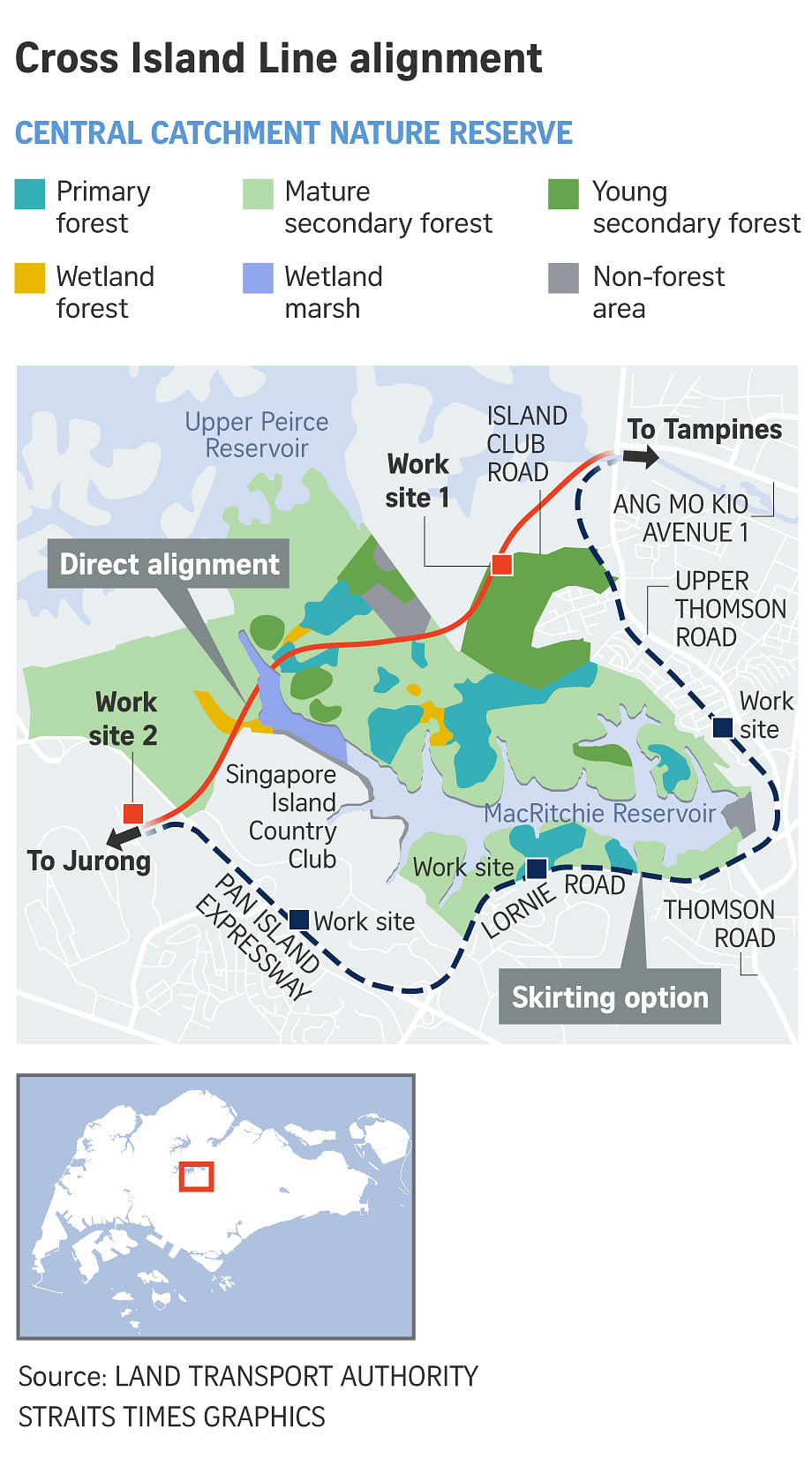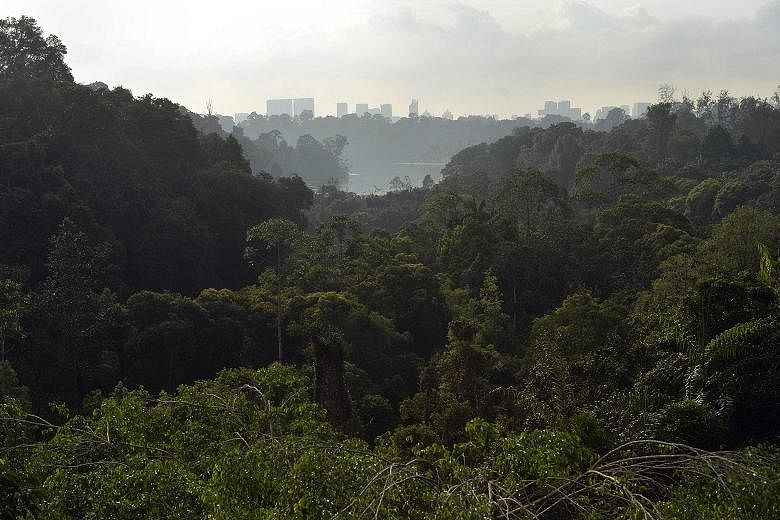SINGAPORE - The Cross Island MRT Line (CRL) will run directly under Singapore's largest nature reserve, instead of skirting around it.
Announcing its decision on Wednesday (Dec 4), the Ministry of Transport (MOT) said the direct alignment will have tunnels going 70m below the Central Catchment Nature Reserve.
Both options - going directly under and skirting around the reserve - are considered viable after an in-depth study, but nature groups had strongly called for the skirting alignment to prevent detrimental impact on flora and fauna in the gazetted reserve near MacRitchie Reservoir.
MOT said the direct alignment will result in the total travel time becoming six minutes shorter than the skirting option.
Fares will also be about 15 per cent lower per trip on average as the route is shorter and more direct, and construction cost is expected to be $2 billion lower.
The ministry also said the direct route will be more environmentally friendly in the long run, as it "has lower energy consumption".
The 50km CRL will run from Changi to Jurong, and will serve estates such as Pasir Ris, Ang Mo Kio and Clementi. It is expected to have an initial ridership of 600,000 per day when it is completed by 2031.
The line was announced in early 2013, and preliminary plans showed it running under primary and secondary forests in the Central Catchment Nature Reserve.
Nature groups, alarmed by the environmental harm which the construction and operation of an underground MRT line right across the heart of the reserve could cause, suggested that the line be built along Lornie Road. This alternative route skirts around the reserve.

The Land Transport Authority (LTA) commissioned a two-phase Environmental Impact Assessment for both alignment options in 2014.
In a statement, the MOT outlined the measures it will take to mitigate the line's environmental impact, based on feedback from nature groups.
Tunnelling as deep as 70m below the reserve - equivalent to the height of a 25-storey HDB block - will ensure the work is fully carried out through hard granite rock, far away from surface flora and fauna, it said.
No surface works will be done in the reserve, it added, noting that typical MRT tunnels are 20m to 30m underground.
There will be two work sites outside the reserve, one along Island Club Road and the second on the western edge of the reserve across from the Pan Island Expressway.

"LTA is committed to explore ways to further optimise the layout of these worksites to minimise land take and any potential disturbance," said MOT.
In a Facebook post, Transport Minister Khaw Boon Wan said the Government had agonised over the alignment as the reserve is "a special part of Singapore".
Skirting the CRL around the nature reserve would "cost taxpayers and commuters dearly", he said.
The Government decided to tunnel much deeper compared to regular MRT lines "so that any impact on the flora and fauna in the nature reserve can be almost completely eliminated", he added.
Speaking to reporters after the announcement, Senior Minister of State for Transport Lam Pin Min said that "the environment assessment has shown that both alignments are feasible". Also, the skirting option would result in longer travel time, additional construction as well as expected higher commuter fares. "We have therefore decided on the direct alignment," he said.
Asked about a potentially unfavourable effect the direct alignment would have on network capacity factor - a fare adjustment component which takes into account the capacity of a transport service vis-a-vis actual usage - because it goes through nearly 4km of unpopulated area under the nature reserve, Dr Lam said: "That is a separate issue... we will address that subsequently."
Environmental precedent
The decision of whether the Cross Island Line will go under or around Singapore's largest nature reserve was six years in the making.
Nature groups were concerned that building a train line under a protected nature reserve would set a precedent for future work in nature areas.
MOT said various factors had been taken into consideration before the direct alignment was selected, including the findings from the environmental study.
The first phase, which had looked at the impact of soil works on the flora and fauna of the nature reserve, had determined that preliminary tests could have a "moderate" impact on wildlife if measures to reduce impact were carried out.
The second phase, which was released earlier this year, had looked at the impact of the construction and operation of the line. It also concluded that this impact could be reduced if mitigation measures are carried out.


